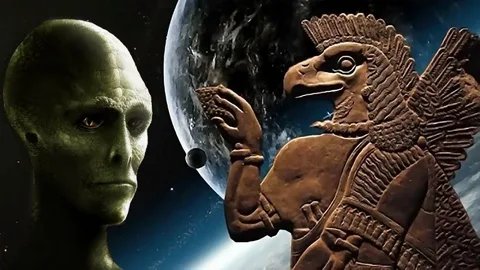The concept of the Anunnaki, a race of extraterrestrial beings from the mysterious planet Nibiru, has captured the imagination of many ever since American author Zecharia Sitchin popularized it. According to Sitchin’s controversial theories, these advanced beings arrived on Earth approximately 500,000 years ago with a specific mission: to mine gold and secure their planet’s survival. While the mainstream scientific community remains skeptical, the story of the Anunnaki blends ancient mythology, modern science fiction, and speculative history in a way that continues to fascinate.

The term “Anunnaki” originates from ancient Mesopotamian texts, where it referred to a group of deities associated with the heavens and Earth. In Sumerian mythology, these powerful gods were believed to have shaped the natural world and even humanity itself. However, Sitchin reinterpreted these ancient narratives in his book series _The Earth Chronicles_, suggesting that the Anunnaki were not divine beings but highly advanced extraterrestrials. He proposed that the Sumerians’ descriptions of gods interacting with humans were actually accounts of alien visitors shaping human civilization.

Central to Sitchin’s theory is the existence of Nibiru, a hypothetical planet within our solar system. Often referred to as “Planet X,” Nibiru is said to have an elongated orbit that brings it close to Earth every 3,600 years. According to Sitchin, Nibiru’s atmosphere was deteriorating, and its inhabitants needed gold to create a particulate shield that could reflect solar radiation and stabilize their environment. This dire need for gold allegedly brought the Anunnaki to Earth, which they identified as rich in the precious metal.

The story goes that the Anunnaki established large-scale mining operations in Africa, where gold deposits were abundant. Ancient Sumerian texts and artifacts are often cited as evidence of these activities, though mainstream scholars dispute these interpretations. Sitchin theorized that, faced with the immense labor demands of mining, the Anunnaki genetically engineered a hybrid species by combining their DNA with that of early hominids, resulting in the creation of Homo sapiens. This new species, humans, were designed to serve as a labor force for the Anunnaki’s mining efforts.
The Enuma Elish, an ancient Sumerian text, is often referenced in support of this theory. The text describes the creation of humans by the gods, which Sitchin interpreted as a metaphor for genetic manipulation. Over time, humans developed intelligence and independence, leading to tensions between them and their creators. According to Sitchin, this could explain the eventual departure of the Anunnaki from Earth.
While these ideas have gained a significant following, they remain highly controversial. Critics argue that Sitchin’s translations of Sumerian texts are flawed and that his interpretations lack evidence. Astronomers have also found no credible proof of Nibiru’s existence, dismissing the idea of a hidden planet with an orbit that aligns with Sitchin’s claims. Furthermore, the notion of using gold to repair an atmosphere is speculative at best, with no scientific basis.
Despite the skepticism, the story of the Anunnaki has had a profound impact on modern culture. It has become a cornerstone of the ancient astronaut theory, which suggests that extraterrestrial beings influenced early human history. Popular TV shows like _Ancient Aliens_ and countless books, documentaries, and online forums have kept the Anunnaki narrative alive. The idea of Nibiru and its potential impact on Earth has also fueled conspiracy theories, from doomsday predictions to secret government knowledge of extraterrestrial life.
What makes the Anunnaki story so compelling is its mix of ancient history, mythology, and modern intrigue. It raises questions about humanity’s origins, the possibility of alien contact, and the mysteries of the universe. While mainstream science and archaeology have yet to validate Sitchin’s claims, his work invites us to reconsider how we interpret ancient texts and artifacts. Whether seen as a myth, a misinterpretation, or a hidden truth, the Anunnaki narrative continues to spark curiosity and debate.
The story of the Anunnaki challenges conventional views of history and offers a tantalizing glimpse into what might be possible. Whether they were gods, aliens, or purely the product of human imagination, their legacy endures in our culture and our collective fascination with the unknown. While no definitive evidence has emerged to prove Sitchin’s theories, the questions they raise about human history, extraterrestrial life, and advanced civilizations keep the discussion alive. For now, the Anunnaki remain a mystery—an ancient tale that blurs the line between myth and reality, urging us to explore the boundaries of what we know.
